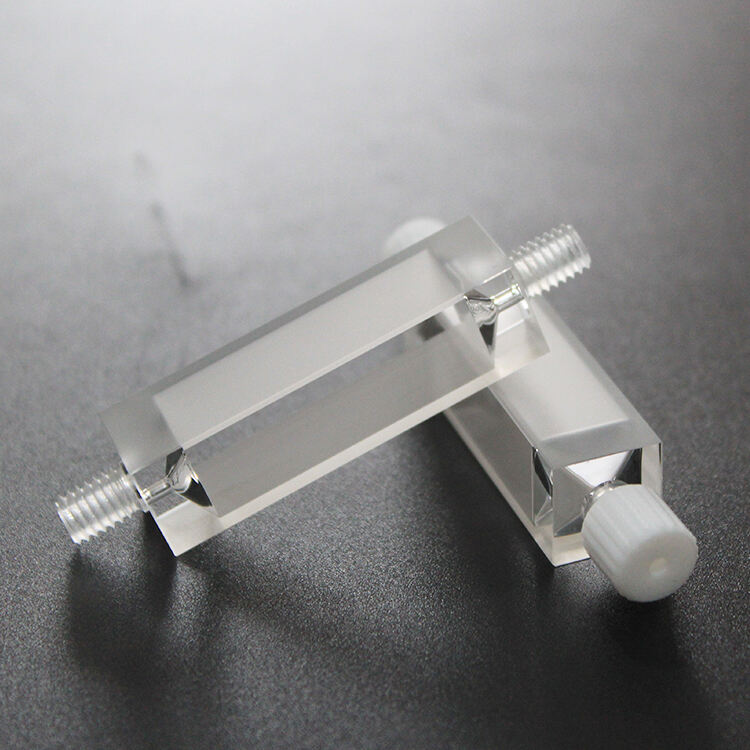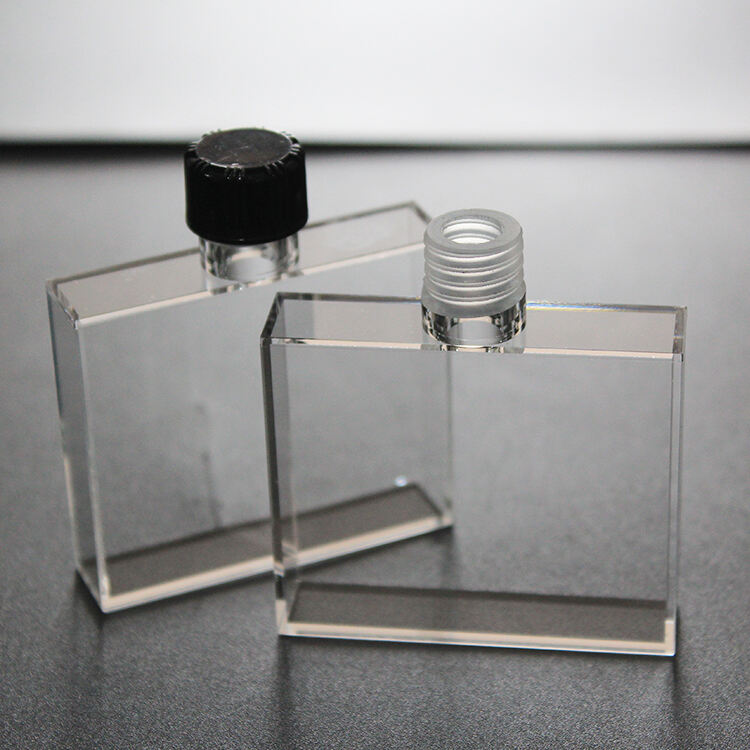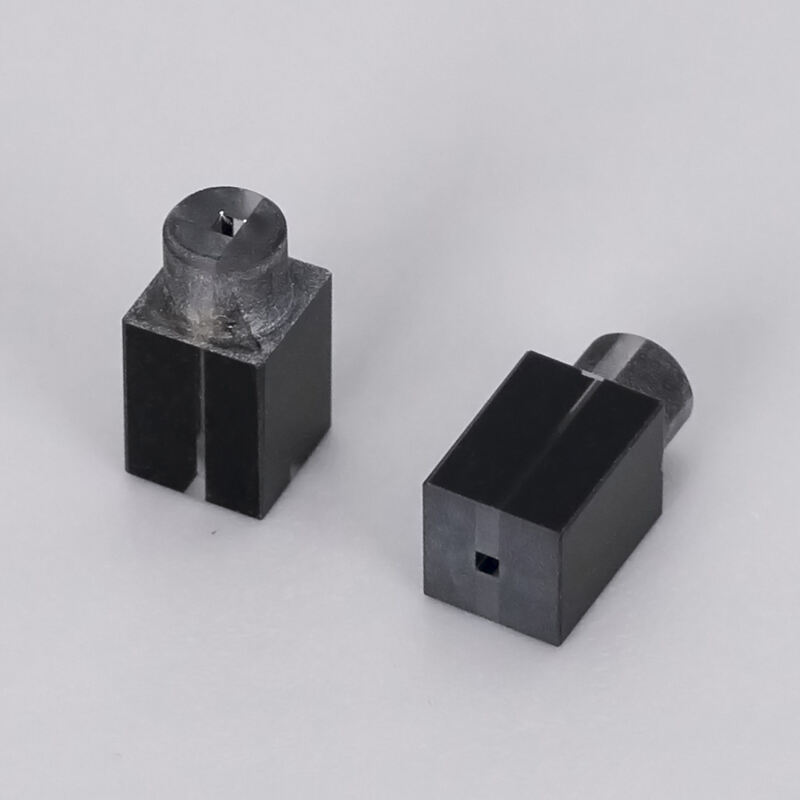A cuvette is primarily designed to allow light to pass transparently through the sample. This is completely crucial since the light enables scientists to measure several characteristics of the material they are investigating. It is important that the cuvette is made of the correct material, as the measurements must be accurate. Cuvettes are typically made of glass or plastic. As such, glass is often used as it is clear and non-reactive with the sample. That means that scientists can rely on the results that they get from glass cuvettes. Plastics cuvettes are less expensive and can be useful, but they might become soft or cheesy when exposed to strong chemicals or UV light.
Cuvette sizes include 1 cm, 2 cm and 5 cm. The "path length" is the distance that the light travels through the sample - which is determined by how wide the Jinke Optical uv vis cuvettes is. Therefore the path length can affect the measurements of the light and therefore is important in choosing the appropriate sizes of your sample and the types of light you are going to use.
Cuvettes are available as single-use (or disposable) cuvettes and as reusable cuvettes. Disposable cuvettes are very practical for fast tests, you don’t have to clean them after use. But, they can be more costly and generate waste, and aren’t all that great for the environment. If you will be measuring samples multiple times, reusable cuvettes are usually a better choice. They can ultimately save you money, too. But you have to clean them very well after each use, to avoid dirt or residual chemicals that might skew the results.
However, it is important to clean your cuvette at intervals, the reason behind this is that when you go out for experiments you still want to keep getting good results. Once you use it, you must wash it with distilled water or a compatible liquid with your sample. And if they tend to leave behind residual chemicals or dust, they can scratch the cuvette or absorb light or other errors in your measurements.

If stains are stubborn, you may apply a mild soap or acidic solution ensuring it is compatible with the cuvette material. Gently scrub it with a soft brush or a cotton swab to prevent scratching the sensitive surfaces. Rinse it well with distilled water after scrubbing, then dry with a clean cloth. Do not touch the clear parts of the Jinke Optical quartz cuvette for uv vis spectroscopy with your fingers---the oils and dirt will change the readings and are not accurate.

Developments in the field of science and technology are leading to the development of a new type of cuvettes in terms of their design and materials, allowing it to operate at its best. For instance, quartz cuvettes have high strength and anti-fogging ability, and can work in harsh environments, so they are widely used in experiments. Jinke Optical cuvette spectrophotometer with UV-transmitting capabilities are a more cost-effective choice and offer good accuracy and durability, but are not as durable.

Micrcocuvettes and flow cells are gaining popularity recently as they require less sample and have higher tests per run. Microcuvettes are much smaller and enable very accurate measurements while consuming very small amount of sample. Jinke Optical cuvettes spectrophotometer come with an integrated pumping mechanism that allows on-line, real-time analysis of samples, which is very advantageous for scientists.
Jinko Optics can provide fully customized solutions for the specific needs of different industries and customers. Whether it is drawings and samples provided by customers or personalized needs for special application scenarios, Jinko Optics can accurately design and produce optical components that meet the requirements. This flexible customization capability is particularly suitable for the precise needs of scientific research institutions, laboratories and specific industries. In addition, the company's rapid response to market changes and customer needs can ensure that customers always get the latest and most suitable technical support and products.
As the drafting unit of the national standard for cuvettes, Jinko Optics has very high standards for product quality. Every cuvette and optical component produced by the company follows the ISO9001:2016 standard, strictly controls every link in the production process, from the selection of raw materials to the factory inspection of finished products, to ensure that every product meets high quality requirements. In addition, it has 6 invention patents and 16 utility model patents, reflecting the company's continued investment in technological innovation and process optimization, so that the products not only have excellent performance, but also have unique market competitiveness.
Jinko Optics is committed to providing customers with high-quality products with high cost performance. By optimizing production processes and management processes and reducing production costs, the company can provide more favorable prices while ensuring the excellent performance of products in quality and function. In addition to the excellent quality of the products themselves, the company also pays special attention to after-sales service, providing timely technical support and professional solutions to ensure that problems encountered by customers during use are quickly resolved. This customer-oriented service concept enables Jinko Optics to stand out in the fiercely competitive market and win the trust and praise of a wide range of customers.
With more than 50 years of R&D and manufacturing experience, Jinko Optics has accumulated rich technical and practical knowledge in the field of spectral accessories. For a long time, focusing on the research and development of core products such as cuvettes, flow cells, optical components, and vapor cells has not only improved the company's technical position in the industry, but also enabled the company to quickly respond to various complex application requirements. The accumulation over the years has helped the company to continue to innovate and always be at the forefront of the industry.